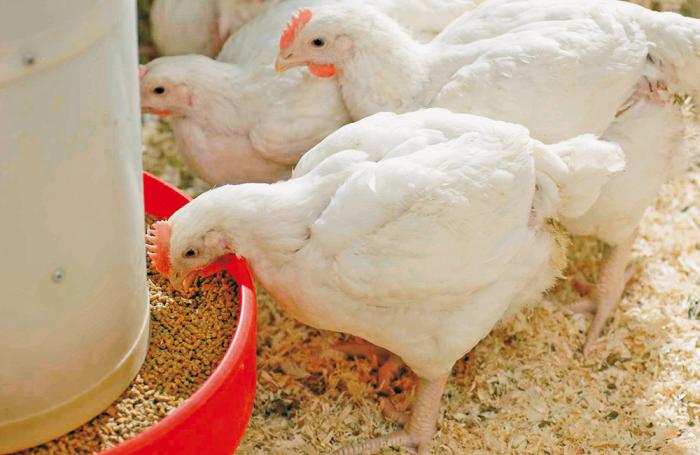- You have no items in your shopping cart
- Subtotal: ₵0.00
Nutrient Requirements of Poultry
Poultry diets must be formulated to provide all of the bird’s nutrient requirements if optimum growth and production is to be achieved. There are six classes of nutrients:
- Carbohydrates – the major source of energy for poultry. Most of the carbohydrate in poultry diets is provided by cereal grains.
- Fats – provide energy and essential fatty acids that are required for some bodily processes.
- Proteins – required for the synthesis of body tissue (particularly muscle), physiological molecules (such as enzymes and hormones), feathers and for egg production. Proteins also provide a small amount of energy.
- Vitamins – organic chemicals (chemicals containing carbon) which help control body processes and are required in small amounts for normal health and growth.
- Minerals – inorganic chemicals (chemicals not containing carbon) which help control body processes and are required for normal health and growth.
- Water.
Factors affecting the nutrient requirements of poultry
The nutrient requirements of poultry are affected by a large number of factors, including:
- Genetics (the species, breed or strain of bird) – Different species, breeds or strains of birds have different average body sizes, growth rates and production levels and will absorb and utilise nutrients from feed with different levels of efficiency. Therefore, they will require feed with different nutrient compositions. The genetics of commercial poultry is constantly changing, and as a result, so are their nutrient requirements. Consequently, breeders of commercial poultry provide information on the specific nutrient requirements for the birds they sell.
- Age – nutrient requirements are related to both body weight and the stage of maturity in bird.
- Sex – prior to sexual maturity, the sexes have only small differences in their nutrient requirements and males and females can usually be fed the same compromise diet to achieve acceptable growth rates. Differences in nutrient requirements are larger following the onset of sexual maturity and significantly different diet formulations are then required for each sex.
- Reproductive state – the level of egg production in hens and sexual activity in males will affect nutrient requirements.
- Ambient temperature – poultry have increased energy requirements to maintain normal body temperature in cold ambient temperatures and the opposite in hot ambient temperatures. Food digestion processes produce body heat, the amount of which will vary according to the nutrient composition of the diet. This is called the heat increment of the diet. In cold temperatures it may be desirable to formulate a diet with a higher heat increment and the opposite in hot temperatures.
- Housing system – the type of housing system will influence the level of activity of the birds and therefore their energy requirements.
- Health status – birds experiencing a disease challenge may benefit from an increase in the intake of some nutrients, most commonly vitamins.
- Production aims – the optimal nutrient composition of the diet will vary according to production aims, such as optimising weight gain or carcass composition, egg numbers or egg size. Poultry that are raised for breeding purposes may need to have their energy intake restricted to ensure that they do not become obese.
(c) www.poultryhub.org


